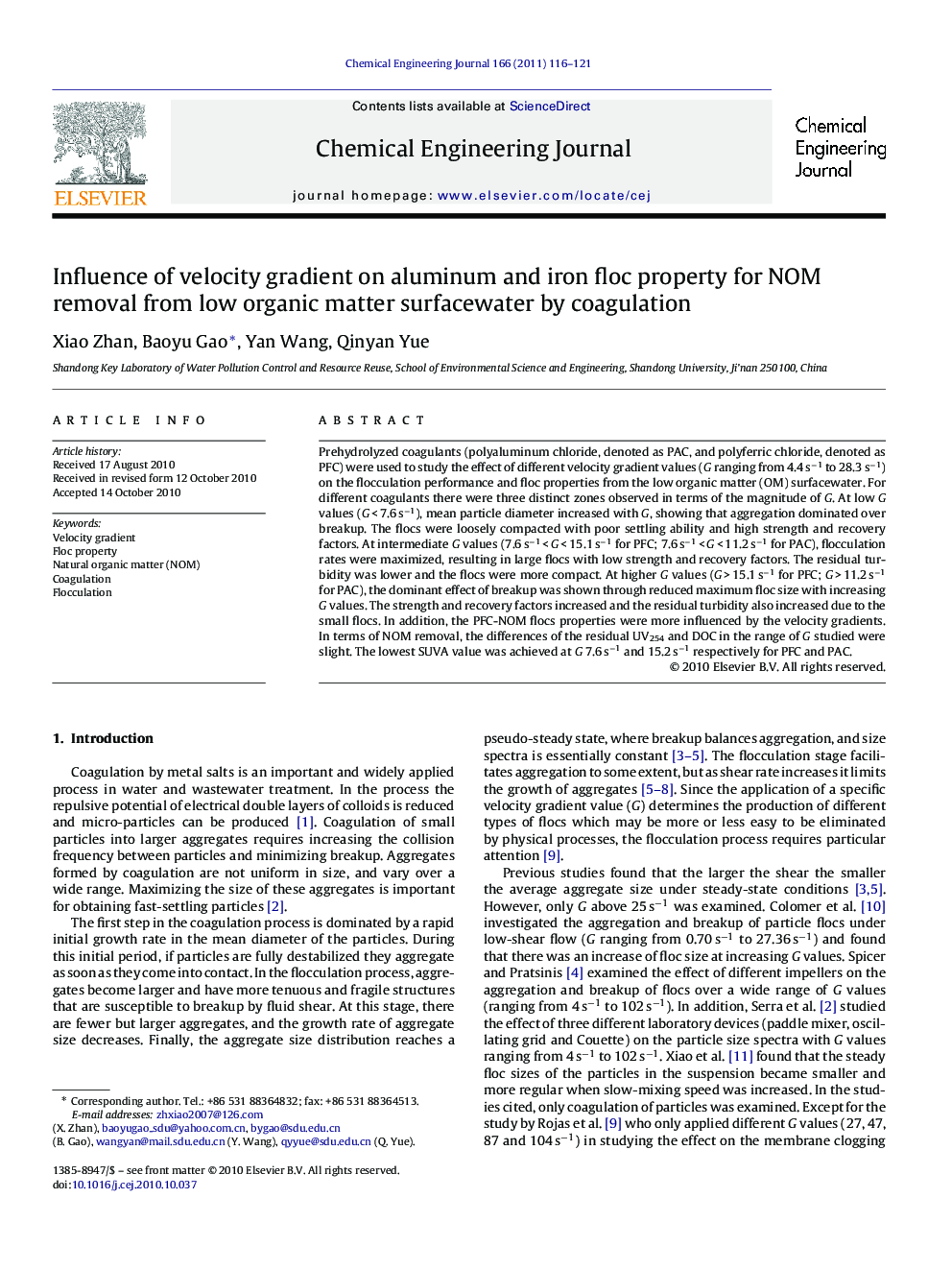| کد مقاله | کد نشریه | سال انتشار | مقاله انگلیسی | نسخه تمام متن |
|---|---|---|---|---|
| 151773 | 456480 | 2011 | 6 صفحه PDF | دانلود رایگان |

Prehydrolyzed coagulants (polyaluminum chloride, denoted as PAC, and polyferric chloride, denoted as PFC) were used to study the effect of different velocity gradient values (G ranging from 4.4 s−1 to 28.3 s−1) on the flocculation performance and floc properties from the low organic matter (OM) surfacewater. For different coagulants there were three distinct zones observed in terms of the magnitude of G. At low G values (G < 7.6 s−1), mean particle diameter increased with G, showing that aggregation dominated over breakup. The flocs were loosely compacted with poor settling ability and high strength and recovery factors. At intermediate G values (7.6 s−1 < G < 15.1 s−1 for PFC; 7.6 s−1 < G < 11.2 s−1 for PAC), flocculation rates were maximized, resulting in large flocs with low strength and recovery factors. The residual turbidity was lower and the flocs were more compact. At higher G values (G > 15.1 s−1 for PFC; G > 11.2 s−1 for PAC), the dominant effect of breakup was shown through reduced maximum floc size with increasing G values. The strength and recovery factors increased and the residual turbidity also increased due to the small flocs. In addition, the PFC-NOM flocs properties were more influenced by the velocity gradients. In terms of NOM removal, the differences of the residual UV254 and DOC in the range of G studied were slight. The lowest SUVA value was achieved at G 7.6 s−1 and 15.2 s−1 respectively for PFC and PAC.
Journal: Chemical Engineering Journal - Volume 166, Issue 1, 1 January 2011, Pages 116–121